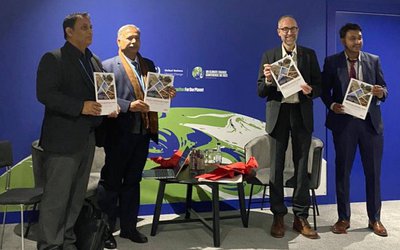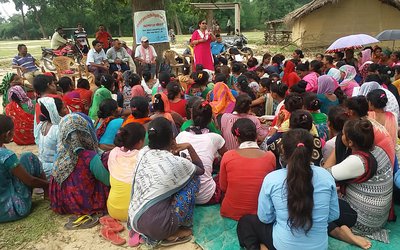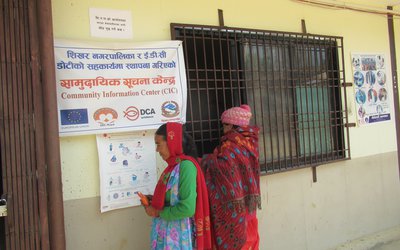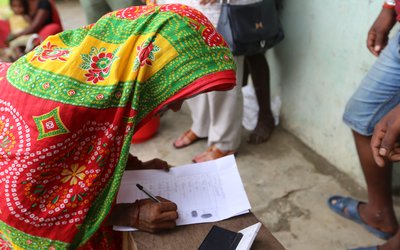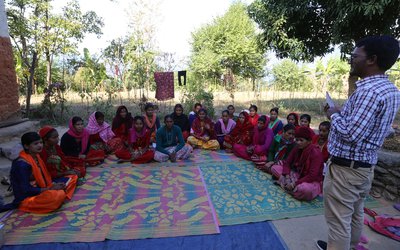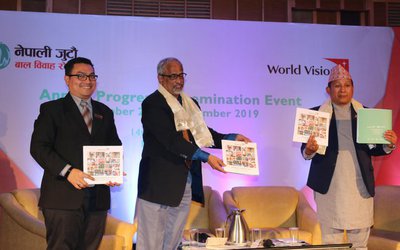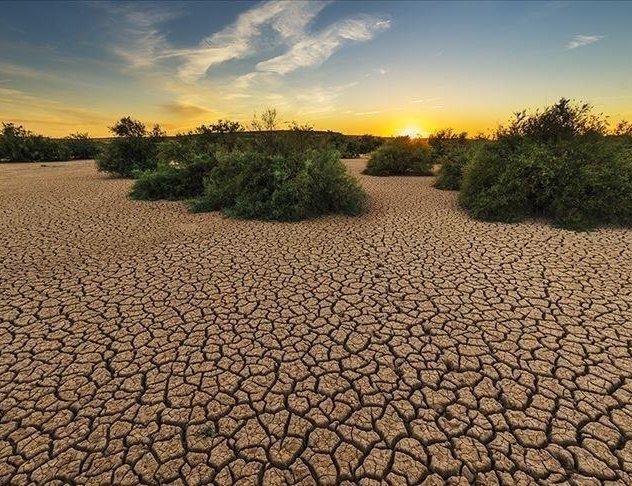
The context: The Pacific region
The Pacific region encompasses 14 countries and territories spread across Melanesia, Micronesia, and Polynesia. Each has a distinct physical geography, local population, and location, but together their rich diversity of people and landscapes, each contributing to a unique natural environment. The island nations, marked by significant geographical dispersion and isolation, grapple with the burden of having limited resources. The collective population of the Pacific island countries stands at approximately 2.4 million. Almost all face the challenge of a high-cost economy coupled with sluggish economic growth. Climate change poses an existential threat in the form of submergence but long before that will result in the risks of displacement and migration for families and communities. Other risks the region experiences include the political exclusion of vulnerable groups, imbalances in resource access, and significant out-migration, all of which collectively undermine human security. This forced migration has resulted in the loss of ancestral homelands, enduring ties to the land, and crucial cultural identities. Key economic activities in the Pacific include fishing, tourism, subsistence agriculture, mining, fossil fuel extraction, and offshore banking. However, despite some economic growth, poverty, suffering, and marginalization are on the rise in the Pacific due to exposure to shocks, climate-induced environmental degradation, and other challenges.
Climate and disaster phenomena in the Pacific region and emerging challenges
The global impacts of climate change are already evident, and the Pacific region is not immune to these effects. In fact, although Pacific countries contribute a mere 0.03% to global greenhouse gas emissions, their inhabitants bear the brunt of climate change consequences. They face both rapid-onset events such as cyclones, floods, landslides, earthquakes, and volcanic activity as well as slow-onset events like droughts. Climate change has rendered tropical cyclones more intense and altered the patterns of floods and droughts, even leading to water scarcity. Coastal flooding and erosion, shifts in rainfall affecting ecosystems and food production, and adverse effects on human health are other adverse effects associated with climate change. In addition, seismic activity along the Australian and Pacific tectonic plates makes low-lying island communities and coastal areas vulnerable to tsunamis. Among various hazards, floods and tropical cyclones jointly contribute to 64% of the total multi-hazard average annual loss, with drought accounting for 20%, among other hazards. According to the World Risk Index for natural hazards, Pacific countries collectively hold the top position, with Vanuatu ranking as number one.
As the polar ice caps melt and sea temperatures rise, oceans expand, their levels rise, ocean acidity increases, and the surface water temperature climbs. The sixth assessment report from the IPCC confirms that the Pacific region is undergoing sea level rise at a rate 2-3 times higher than the global average. Rising sea levels exacerbate issues such as saltwater intrusion and the recurrence of extreme weather events. The consequences of sea-level rise extend to the destruction of coral reefs and the relocation of marine species; they impact biodiversity, cause habitat destruction, and disrupt ecosystems. The rise in surface sea temperatures and consequent ocean acidification endanger corals reefs, which play a crucial role in generating the sediment necessary for the stability of Pacific islands. According to ESCAP (2020), the escalation of marine heat waves and ocean acidification is anticipated to intensify with a global warming of 1.5°C (high confidence), with even greater increases at 2.0°C and beyond. Indigenous island communities depend on small coastal aquifers, delicate freshwater reservoirs that rest atop denser seawater and are replenished by rainfall. These coastal aquifers are threatened by the saltwater contamination associated with rising sea levels as well as the reduction in volume due to coastal erosion. An evaluation of groundwater revealed that a significant number of low-lying carbonate islands, especially those in Tuvalu, Palau, and the Republic of the Marshall Islands, are particularly vulnerable. In addition to these challenges, the heightened risk of epidemics, tidal surges, and wildfires, all exacerbated by environmental degradation, adversely impacts local populations and degrades their resilience to shocks.
Pacific ecosystems and species confront various threats other than climate change, including deep-sea mining, coastal development, invasive species, predator outbreaks, overfishing, and ocean acidification. Extreme weather events have resulted in significant losses of lives and assets, displacement of populations, psychological trauma, and stigma. Climatic and disaster phenomena disrupt economic activities, divert fiscal resources, slow down the rate of growth of gross domestic product (GDP), and undermine overall development priorities and efforts.
As per ESCAP (2020) findings, the annual economic losses attributed to disasters in the Pacific region surpass previous estimates, totaling US$1.075 billion, which is nearly 5% of the combined GDP for the Pacific countries—more than double the earlier assessments. Out of this sum, the average annual losses are distributed as follows: tropical cyclones at 49.6%, drought at 20.2%, earthquakes at 15.4%, floods at 14.6%, and tsunamis at 0.2%. Notably, Palau, Tonga, and Vanuatu exhibit average annual losses per capita of $1,181, $711, and $605, respectively. According to the Pacific Catastrophe Risk Assessment and Financing Initiative, extreme events cost the Republic of the Marshall Islands average annual losses of more than 2% of GDP.
Numerous reports emphasize that progress in increasing the wellbeing of the people of the region is jeopardized by escalating global tensions, emerging technologies, increasing polarization, and the existential challenges associated with climate change. The UNDP reports that the region grapples with three intersecting 'risk clusters': existential threats arising from climate change and potential future pandemics, economic challenges stemming from evolving globalization trends and automation, and a deceleration in the momentum for reform due to diminishing democratic spaces and escalating populism and polarization. To better address these challenges, it is imperative to intensify and consolidate ongoing efforts.
The Sixth Assessment Report (2022) from the Intergovernmental Panel on Climate Change cautions that certain island nations could hit their adaptation limits within a few years rather than within a few decades. The report also projects that the adaptation requirements for developing countries alone will amount to US$127 billion by 2030 and US$295 billion by 2050.
The inherent vulnerability of small island nations due to their remoteness heightens their exposure to climate change risks and potentially increases the threat of future disasters. Challenging socio-economic and political conditions, coupled with severe climate and disaster impacts, have created a pressing need for Pacific island countries to strive attain their Sustainable Development Goals by 2030. Resilience building is urgently required if such countries are to be able to cope with the impacts and adversities of climate change.
Some initiatives and emerging gaps
Practiced integrated initiatives that reduce the impacts of climate change
Development partners have committed to comprehensive initiatives aimed at reducing the impacts of climate change through mitigation, adaptation, and environmental protection. Their ultimate goal is to address the injustices associated with climate change. First, they have supported the installation of solar power facilities, facilitated rural electrification, promoted the widespread adoption of renewable energy and energy-efficient technologies, and adopted new policies and instruments within the energy sector. Second, initiatives to safeguard biodiversity have concentrated on environmental protection and the preservation of ecosystems by empowering communities and integrating biodiversity conservation into land and seascape governance, planning, and management. These initiatives have also contributed to the systematic development of monitoring, assessment, and early warning systems by strengthening gender-sensitive disaster communication and climate inundation monitoring systems, thereby improving governments’ preparedness for and resource capabilities to minimize the loss of lives and damages. Third, the integration of livelihood initiatives across various programmatic sectors has been instrumental in enhancing people's capacity to adapt to climate and disaster risks.
Fostered coordination, collaboration, and networking to create synergy
In the Pacific region, the efforts towards building resilience involve the collaborative contributions of multilateral donors, United Nations agencies, regional organizations, and bilateral partners. According to a 2020 World Bank report, the Asian Development Bank and the World Bank are the principal multilateral partners, with portfolios amounting to $1.3 billion and $1.2 billion, respectively. United Nations agencies, including UNDP, are integral players in Pacific development through their One-UN approach. Regional organizations like the Secretariat of the Pacific Community (SPC) and the Pacific Islands Forum have intensified their endeavors in addressing integrated development, specifically focusing on resilience-building. The Council of Regional Organizations in the Pacific facilitates a consultative process among various regional agencies to promote complementarity, prevent overlap, and address potential gaps in programs aimed at enhancing resilience. Coordination with regional organizations is planned to ensure updates on development issues, and ministries actively engage with both multilateral and bilateral development partners to conduct regular reviews.
Developed initiatives following the guidance of regional and national policies
Development agencies adhere to the Sub-Regional Program Document for the Pacific Island Countries and Territories 2018-2022, which itself aligns with the broader UN system-wide Pacific Strategy. The emphasis is on expediting the advance of the global 2030 Sustainable Development Agenda by prioritizing data, policy, participatory planning, budgeting, and monitoring. UNDP's pivotal role in mobilizing various agencies to contribute to the policy landscape has been widely recognized by stakeholders. The implementation of policies, when put into action, has the potential to break the linkages between disasters, poverty, and inequality. Developing and executing policies that are informed by risk, utilizing investments effectively, and harnessing new technologies and innovation can play a crucial role in mitigating disaster and climate risks. National governments play a pivotal role in spearheading these efforts as they leverage resources to create synergy. In the Pacific region, particularly within the green and resilience sectors, key co-funding partners include entities such as the Global Environment Fund (GEF) and the Green Climate Fund (GCF).
Identified potential gaps
Despite commendable initiatives, several gaps persist. Many development programs aimed at mitigating the impacts of climate change and enhancing resilience still adopt a project approach, one which limits effectiveness. In addition, human resource management is at risk because capacity-building initiatives follow an 'event approach’. The incorporation of the gender equality and social inclusion (GESI) approach into government plans and policies is insufficient. Although policies are formulated, the absence of supportive structures makes it difficult to translate policy provisions into actionable steps. Various obstacles hinder private sector access to climate finance. The fiscal burden of climate impacts on national budgets is substantial, and Pacific nations have minimal insurance coverage for risk transfer. The commitment to strengthen regional cooperation and solidarity encounters numerous hurdles, and knowledge management is dwindling due to the absence of systematic documentation of good practices and dissemination.
Seven STEP-led approaches
Step 1: Adopt a programmatic approach based on the learning rather than a project approach.
Devise novel initiatives with a programmatic focus on biodiversity conservation, land resource management, wetland and watershed management, forest and marine resource management, and the like. Align these initiatives with national governments’ plans and programs. Bolster the resilience of ecosystems against the impacts of climate change, climate variability, and disasters using environmental protection measures. Prioritize climate change adaptation actions, including the development of climate-proof physical infrastructure and the enhancement of government adaptive capacities. Undertake mitigation activities such as promoting renewable energy, electrifying transport, and reducing power usage through efficiency measures. Tailor livelihood schemes to integrate climate and disaster risk considerations, micro-climatic conditions aligned with governments’ long-term programs to ensure sustainable development. A programmatic approach will help regularize Pacific countries' agendas in the long run.
Step 2: Design capacity-building initiatives using a process rather than event approach
The capacity of national and regional stakeholders for effective mobilization and implementation of national climate finance initiatives must be enhanced through forming partnerships, and creating business plans. Capacity-building initiatives should prioritize peer-to-peer learning and be grounded in capacity gap analysis. Stakeholders need to be educated in how to access funding from the GCF and the GEF. Providing policy incentives and regulatory frameworks is crucial in helping stakeholders leverage available resources. A process-oriented approach to capacity-building fosters knowledge development and creates momentum.
Step 3: Mainstream the GESI approach into government plans and policies
Given their dynamism and context-specificity, socio-economic, environmental, and gender factors need to be periodically assessed and analyzed. Barrier analyses should be conducted concurrently with assessments of social and environmental safeguards and gender to pinpoint those key issues which hinder the integration of GESI into national government plans and programs. GESI should be implemented throughout the programmatic cycle and encompass the collection of baseline data as well as design, implementation, and monitoring to ensure that benefits are equitably distributed to all individuals, irrespective of gender, age, and class.
Step 4: Operationalize policy provisions through advocacy rather than focusing new policies
Climate change policies and mandates, including initiatives such as Pacific Adaptation to Climate Change, Pacific Declaration on Climate Change, Sub-Regional Program Document for the Pacific Island Countries and Territories (2018-2022), the Pacific Plan of Action, UN Pacific Strategy (2018–2022), and SPC’s Strategic Plan (2022-2031) should be carefully implemented. Climate action should be accelerated by focusing on disaster resilience, promoting climate-smart and digital trade, facilitating energy transition, cutting emissions, pursuing nature-based solutions, and integrating climate change considerations into regional and national plans and policies. For effective policy advocacy, actors should create concise two-page policy briefs involving civil society organizations and, to ensure their proper dissemination, mobilize the media. Synopses of global mandates such as the Paris Agreement, Sendai Framework for Disaster Risk Reduction, and SDGs, along with regional frameworks for resilient development in the Pacific should be developed and disseminated. Governments need to prioritize, commit to, and allocate significant resources to operationalize global and regional policy mandates.
Step 5: Foster public-private partnership rather than engaging governments
The private sector plays a pivotal role helping governments fulfill their Nationally Determined Contributions commitments and national adaptation plans by engaging in public-private partnerships, thereby serving as a conduit for innovative financing and services. According to an analysis by the Climate Policy Initiative, private finance constitutes the majority of climate finance (56%), averaging USD 326 billion annually in 2017/2018. Of this amount, 85% was directed towards renewable energy, 14% towards low-carbon transport, and less than 1% to all other subsectors. The private sector has a comparative advantage in increasing investments in climate resilience, investments which can have a positive economic impact if appropriate policies and incentives are in place. Governments should actively support the private sector by implementing suitable measures and procedures for resilience-building.
Step 6: Strengthen regional cooperation and solidarity
Since they have small populations and limited capacity and resources, Pacific island countries need to collaborate with development partners at the national and regional levels to tackle government priorities. Unlocking potential regional cooperation could be achieved through partnerships with entities such as the Secretariat of the Pacific Regional Environment Program, World Meteorological Organization, and SPC, among others. While accessing climate change finance remains challenging in the region, this obstacle can be mitigated by incorporating climate change and disaster risk considerations into national plans, policies, and programs. The mobilization of climate finance is a shared responsibility involving the government, private sector, development partners, civil society, and communities. To strengthen cooperation and solidarity, it is beneficial to formulate and implement implementation guidelines for public-private partnerships following the example set by the Ministry of Economy of Fiji.
Step 7: Focus on knowledge management rather than knowledge building
While past climate change initiatives have yielded valuable practices and lessons, mechanisms to effectively capture the essence of achieved results at the national level are conspicuously absent. If there are inadequate documented, valuable practices are likely to erode over time. To prevent such a loss, it is imperative to document and disseminate good practices and lessons learned widely through electronic and print media, including websites, and social media platforms. Special attention should be given to compiling information on organizations which share international best practices, create concise case studies and video documentaries, and utilize both national and regional media outlets, including brief case studies and video documentaries, to disseminate these insights. Annual learning and review workshops and meta evaluations should be conducted and small research grants provided to university students interested in contributing to climate change research. It is essential to focus on knowledge management—organizing, creating, categorizing, storing, retrieving, and sharing collective knowledge—among Island countries. Strong monitoring, review, and reporting mechanisms need to be implemented and reflection sessions conducted. Both hard copies and digital versions should be provided to all government agencies, and, in acknowledgement of the currently poor data management mechanisms in Pacific island countries, the proper archiving of digital copies in government systems and websites for future reference ensured.
(Dr. Gautam serves as an Independent Evaluator and Researcher specializing in Asia and the Pacific. He holds positions as a Senior Research Fellow at the National Disaster Risk Reduction Centre Nepal and an Adjunct Fellow at HADRI/Western Sydney University. For inquiries, you can contact him at drrgautam@gmail.com).
- Renewable Energy-Sector Policy Initiatives And UNDP’s Role In The Pacific Region: The Path Ahead
- Mar 04, 2024
- Operationalization Of Nepal’s National Adaptation Plan: Institutionalizing A Monitoring, Review, And Reporting System Is Crucial
- Jan 09, 2024
- The “Safe School” Campaign: Is Nepal moving In The Right Direction?
- Sep 12, 2022
- Nepal’s DRRM Policy Landscape: Well On The Way To Making Nepal Ready And Able To Respond To Disasters
- Aug 22, 2022
- How Prepared Is Nepal For Future Disasters?
- Aug 09, 2022


